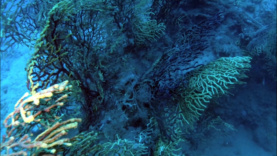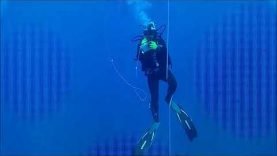Decompression of a diver

The decompression of a diver is the reduction in ambient pressure experienced during ascent from depth. It is also the process of elimination of dissolved inert gases from the diver’s body, which occurs during the ascent, during pauses in the ascent known as decompression stops, and after surfacing until the gas concentrations reach equilibrium. Divers breathing gas at ambient pressure need to ascend at a rate determined by their exposure to pressure and the breathing gas in use. A diver who only breathes gas at atmospheric pressure when free-diving or snorkelling will not usually need to decompress, Divers using an atmospheric diving suit do not need to decompress as they are never exposed to high ambient pressure.
When a diver descends in the water the hydrostatic pressure, and therefore the ambient pressure, rises. Because breathing gas is supplied at ambient pressure, some of this gas dissolves into the diver’s blood and is transferred by the blood to other tissues. Inert gas such as nitrogen or helium continues to be taken up until the gas dissolved in the diver is in a state of equilibrium with the breathing gas in the diver’s lungs, at which point the diver is saturated for that depth and breathing mixture, or the depth, and therefore the pressure, is changed. During ascent, the ambient pressure is reduced, and at some stage the inert gases dissolved in any given tissue will be at a higher concentration than the equilibrium state and start to diffuse out again. If the pressure reduction is sufficient, excess gas may form bubbles, which may lead to decompression sickness, a possibly debilitating or life-threatening condition. It is essential that divers manage their decompression to avoid excessive bubble formation and decompression sickness.
(https://en.wikipedia.org/wiki/Decompression_(diving))

In the video, the sub is making a decompression stop at a depth of about 9 meters, as well as consulting tools and tables that indicate the correct timing and depth of stopping, communicates through a simple boat deck and surface assistance The outcome of the dive and in the eventuality, may signal some emergencies such as the demand for oxygen to avoid dangerous decompression sickness.

Decompression sickness (DCS; also known as divers’ disease, the bends or caisson disease) describes a condition arising from dissolved gases coming out of solution into bubbles inside the body on depressurisation. DCS most commonly refers to problems arising from underwater diving decompression (i.e., during ascent), but may be experienced in other depressurisation events such as emerging from a caisson, flying in an unpressurised aircraft at altitude, and extravehicular activity from spacecraft. DCS and arterial gas embolism are collectively referred to as decompression illness.
Since bubbles can form in or migrate to any part of the body, DCS can produce many symptoms, and its effects may vary from joint pain and rashes to paralysis and death. Individual susceptibility can vary from day to day, and different individuals under the same conditions may be affected differently or not at all. The classification of types of DCS by its symptoms has evolved since its original description over a hundred years ago.
Risk of DCS caused by diving can be managed through proper decompression procedures and contracting it is now uncommon. Its potential severity has driven much research to prevent it and divers almost universally use dive tables or dive computers to limit their exposure and to control their ascent speed. If DCS is suspected, it is treated by hyperbaric oxygen therapy in a recompression chamber. If treated early, there is a significantly higher chance of successful recovery.
(https://en.wikipedia.org/wiki/Decompression_sickness)
(https://it.wikipedia.org/wiki/Malattia_da_decompressione)



























You must be logged in to post a comment.